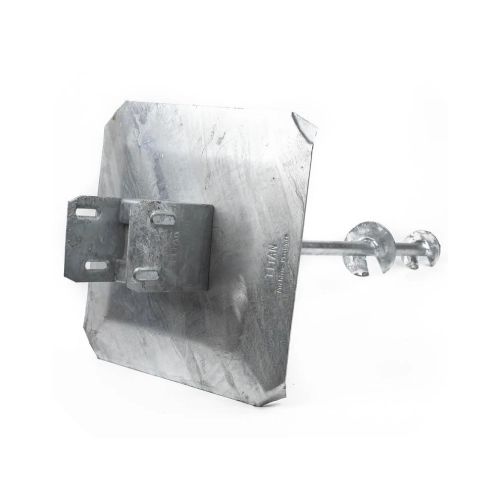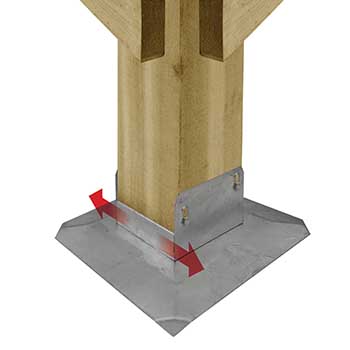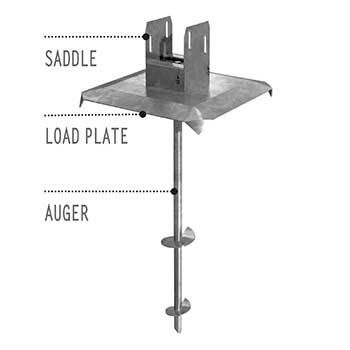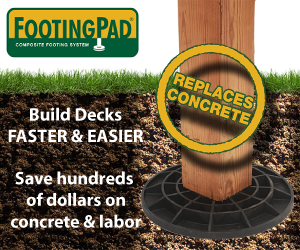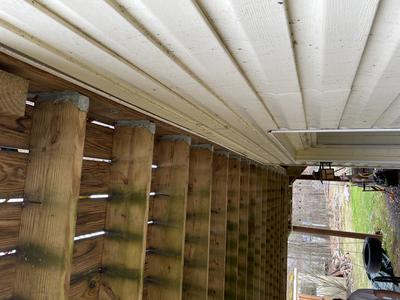faster, easier Options for Deck Foundations
There are simpler ways to support your deck
You all know how much work and effort and money it takes to install traditional concrete deck foundations - or footings. Not to mention time waiting for concrete to cure. It's the hardest part of building a deck.
In some cases, depending on the height of a deck, you will have to connect it to the ledger of the home. Which means you must install proper concrete footing foundations that go below the frost line, so the deck doesn't move independently in relation to the home.
Most Decks Can Be "Free Standing" or "Floating"
Did you know this?
If your deck is 6 feet or less with proper post to beam and joist bracing, it is a perfect candidate for a floating deck.
This means you have options for your deck foundation that can save you time, money and effort.
Here are your deck footing options:
Deck Blocks
The cheapest deck foundations are concrete deck blocks that just sit on the ground. The blocks are usually less than $10 apiece. However, you must buy a lot of them to ensure the weight of your deck is spread out over enough soil surface area so that they don't sink.
If you are in a high wind zone - and much of the continental United States, and parts of Canada are - you must also install ground anchors with tie-down cables over the deck framing to make sure it won't achieve "Lift-Off" in a worst-case scenario.
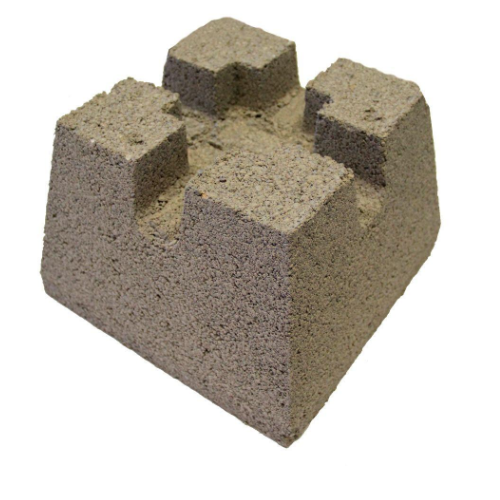
Imagine via Home Depot
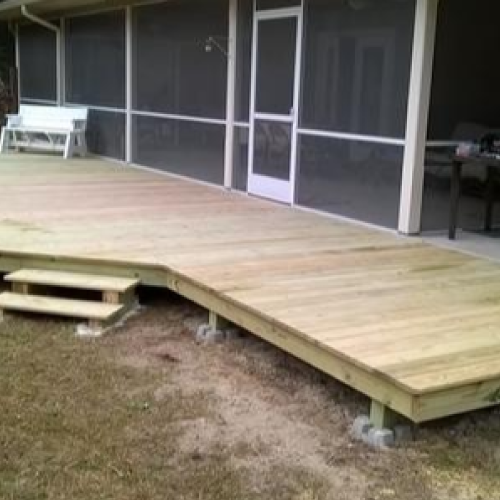
Imagine via Home Depot
However, most concrete deck blocks can only hold 4x4 posts, not 6x6s and they have no lateral strength at the base of the post. Also, if you drop set the framing into the groove, the underside of the joist is still 5-6" above grade. So, you may want to build a deck that is lower to the ground.
Engineered Helical Piers
Engineered helical piers have been around for a long time and are proven technology. The system is designed so that there is no budge even if there is frost heave.
They usually require heavy machinery to install and are most common for home foundation repairs. They also require close review by engineers which of course increases the cost. This option is a top notch high end solution and is typically too expensive for a light weight deck structure.
If you are connecting your deck or structure to a house, then this solution is an important consideration.
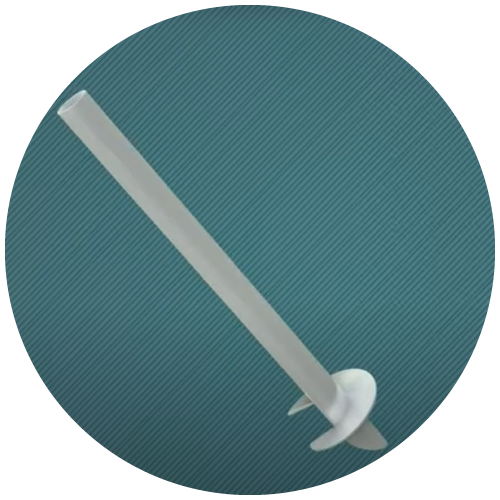
Image via Techno Metal Post
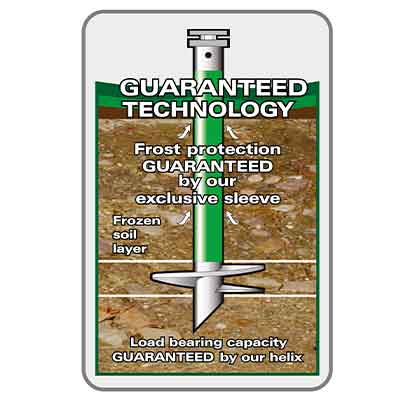 |
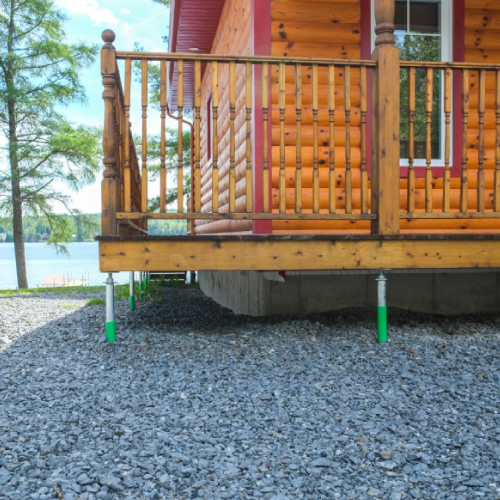 Image via Techno Metal Post |
Ground Anchored Spikes
Ground anchored spikes are used for fence posts. But some of them use modified load plates and are a good deck foundation option. They are less expensive than an engineered helical pier and provide more lateral strength than surface deck block footing.
The installation method is either brute strength with a sledge hammer or use a jack hammer. A lot of home owners aren't interested in learning how to use a jack hammer or taking the time to rent one. Plus, if the spike goes in crooked and you must back it out to re-angle or re-install it, it is very tough to do without special pulleys and tools. Despite these issues, they are an affordable option.
If you go this route, I would recommend looking at the Oz-Deck system rather than the cheap version you see in the picture above. The Oz-Deck has a load plate unlike the spike shown in the photo above. It is well made and very reliable. However, I am not sure if they are still on the market so do check-in with them.
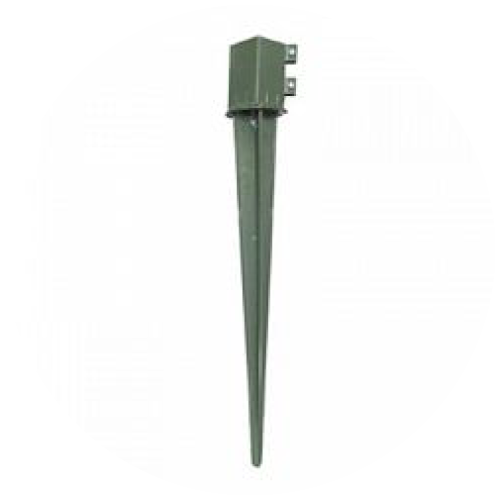
Ground Screw Anchored Footings
The Titan Deck Foot Anchor is a fast and easy solution for supporting any light weight structure that is floating or free standing from a house. You just screw the auger portion into the ground using a lightweight hand-held impact wrench and never experience any kick back. If you hit an obstacle like a rock, you can easily reverse the deck foot anchor out and move over a bit.
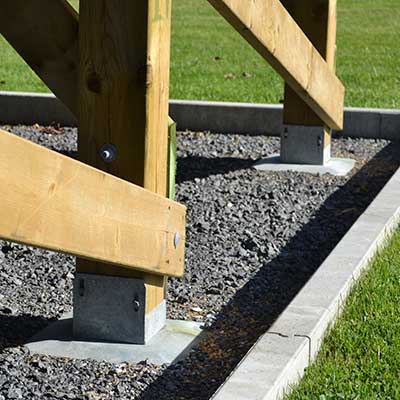
You can then screw on any post bracket you need. The new version now has a lateral slide feature that allows for the saddle to move left or right up to 3". Each footing can support up to a minimum of 19,000 psf according to independent Intertek destruction testing. It is well made option and very reliable.
This is a very good, easy to install and an affordable option to consider for any floating deck.
Flat Concrete Forms
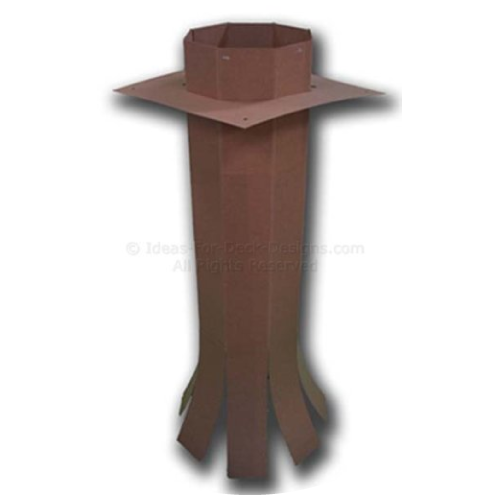
If you are fixed on using concrete footings for your deck foundation, then I highly recommend this system that is very easy to use. (other than the digging and mixing concrete) It's a flat concrete form that saves so much space transporting instead of big round sonotube forms. Its design incorporates a bell shaped footing so you don't need to spend another $25 on a heavy duty plastic bell shaped form.
This is a great idea. I congratulate the inventor for such an elegantly designed solution.
Contact or Flat-Forms.com for local availability. Or read further if you want to learn more.
post foundations -footingpad®
Here is a new take on supporting posts and columns that are embedded in the soil. Use ground treated dimensional lumber and save the time of mixing cement.
It's another great option for pole barns, decks or any supporting column. Check it out!

Just A Few Choices For You
A few ways to design foundations for your deck.
This is just a quick summary of some of the ways you can build your deck foundations. If you can get away with a floating style foundation for a free standing deck, go for it! Otherwise, investigate the flat form footing concept.
Looking for more information? Take a Closer Look At Flat Forms
Home > Building A Deck > Deck Foundations





















